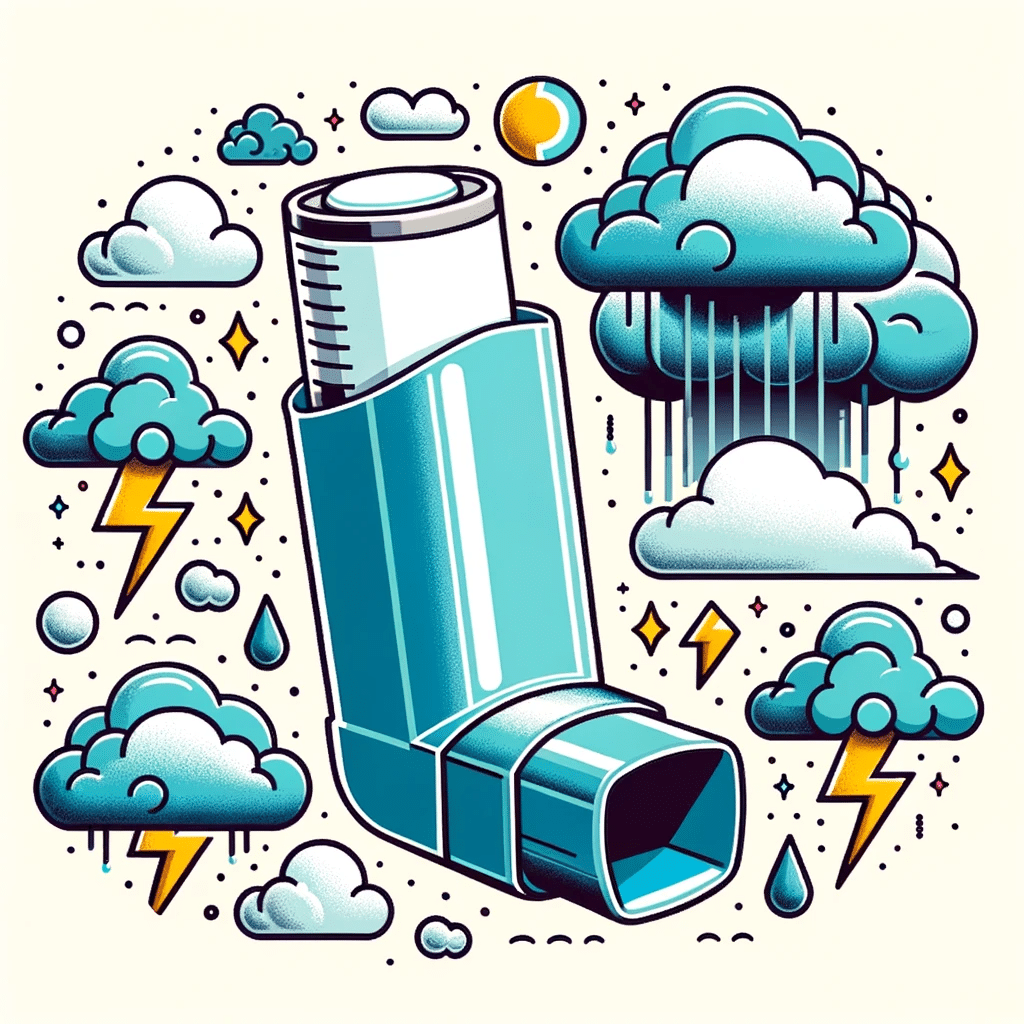As we step into the warmer months, we need to be vigilant about a phenomenon known as thunderstorm asthma. With storms becoming more frequent, it’s crucial for everyone, especially those allergic to ryegrass pollen, to be prepared.
What exactly is Thunderstorm Asthma?
In simpler terms, during spring and summer, certain weather conditions cause ryegrass pollen to burst and scatter tiny fragments. These minute particles can be inhaled deeply into the lungs, and for those allergic to this pollen, it can induce a sudden asthma attack. This sudden onset of asthma symptoms due to pollen allergy during springtime thunderstorms is termed ‘thunderstorm asthma’.
A Glimpse of the Past
In 2016, Victoria witnessed an unexpected asthma catastrophe on a fateful day in November. A mix of pollen and thunderstorms caused thousands to experience asthma symptoms suddenly. This overwhelming situation stretched the capacities of emergency services, reminding us of the dangers of thunderstorm asthma. It brought to light that it could affect anyone, even if they haven’t had asthma before.
Who’s at Risk?
If you’re outdoors during windy conditions right before a thunderstorm, and there’s high pollen concentration in the air, you might be at risk, especially if allergic to ryegrass pollen. This primarily includes:
- Those whose asthma symptoms aggravate in spring.
- Individuals with asthma who have a grass pollen allergy.
- People with springtime hay fever.
- Even those who have only experienced hay fever in spring without any prior asthma diagnosis.
How Can You Stay Safe?
Before the Stormy Season:
- Consistent Medication: Stick to the asthma medications recommended by your doctor.
- Update your Asthma Action Plan: It’s vital to have a current written asthma action plan. If you don’t have one, consult your doctor immediately to prepare one.
During the Stormy Season:
- Stay Informed: Keep track of pollen counts and weather predictions.
- Take Cover: If a storm’s on the horizon, stay indoors or in a car with windows shut and the AC set to recirculate.
- Always Be Prepared: Carry your reliever inhaler at all times.
For those with hay fever but without asthma, it’s equally vital to avoid outdoor exposure during windy conditions in a spring or summer thunderstorm.
Thunderstorm asthma is a real and pressing concern. With summer around the corner, it’s our responsibility to stay informed, prepared, and safe. If you haven’t reviewed or set up your asthma action plan yet, now’s the perfect time. Book an appointment with us to ensure you’re protected this season. Let’s face the summer storms with confidence, not fear.
References:

